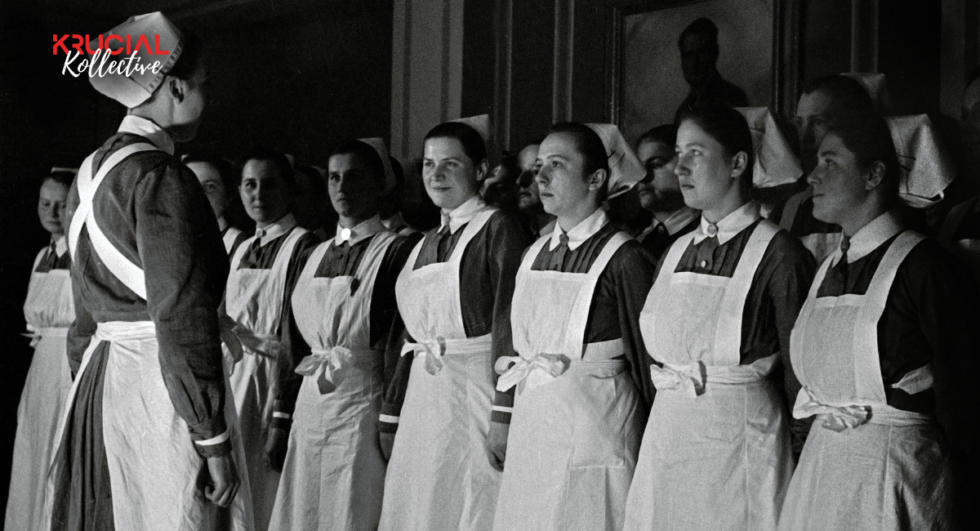
The Vital Role of Nurses During Wartime
By: Morgan Clark
Nurses were not always seen as an essential part of the battlefield. Prior to World War I, many nurses, and the women who filled those roles, offered their help on a volunteer basis with no organization to represent them. As international violence continued into the 20th century, the need for military nurses rapidly grew. According to the Department of Veteran Affairs, 59,000 women served as nurses in the Army Nurse Corps during World War II. Now, there are nurses serving in each branch of the military.
American Revolutionary War
Nurses in the American Revolutionary War were mainly wounded male soldiers helping other wounded soldiers. It was not until General Horatio Gates requested for women to take care of and support the soldiers that women were involved. His reasoning was to have someone tend to the soldiers’ wounds while also being compassionate to the wounded soldiers. This became the first organized nursing system; for every ten soldiers, there was one nurse. Having women work during this time also caused a social shift. Many people believed that women were not mentally capable of this kind of work, but that was proven wrong. Some nurses were even paid two dollars per month (equivalent to $44.25 today). After the war, the government raised it to four dollars a month, giving many impoverished women a living.
Civil War
Even though there was an organized system during the Revolutionary War, this was not entirely true for the Civil War. There were thousands of untrained nurses who volunteered during the Civil War. Luckily Clara Barton (Founder of the Red Cross) and Dorothea Dix – (eventually the Superintendent of the Army Nurse Corps) made a Nurse Corps to help train and staff nurses. Unfortunately, Black women were not allowed to be a part of the Nurse Corps though they played a vital role in the Civil War. Up to 3,000 nurses participated in the war, excluding the Black nurses who were not counted. With that many women, the government promoted Dix to the superintendent of female nurses. After the war, nursing was officially seen as a profession, and many medical schools opened.
Spanish War
Although nurses were a part of the war, they were not a part of the battlefield. This changed when the military noticed the low numbers of nurses. In April 1898, the surgeon general allowed nurses to serve under contract with the military. Since there was no specification of gender, many women signed up. Though signed, there were no organizations and resources for these nurses until 1901, when the Army Nurse Corps was created. It was only for white women, but it staffed up to 1,500 nurses in the war. By the end of the war, only 20 nurses died, mainly from diseases.
World War I
The Army Nurse Corps was established by this time, and women could participate in the war. Not only as a nurse but as a soldier due to how desperate the country was for bodies. Although the draft produced low numbers, African-Americans and immigrant women nurses could not serve overseas. World War I recruited 403 nurses and ended the year with 22,000 nurses. Nurses became essential to this war due to the global scale. The nurses used new medical practices such as blood transfusion, painkillers, anesthetics, and antiseptics. With these new techniques, they could save lives instead of delivering bodies to the morgue. They could be a part of the battlefield with many of them stationed on the frontline.
World War II
After World War I, nurses were assigned ranks in response to the disorganization of leadership among the nurses. Now that the government knew the importance of nurses on the battlefield, they sometimes provided free training. Not only were nurses trained in field sanitation but also in mental health. This time, these ladies were in the line of fire. Their training and position on the battlefield contributed to a lower death rate than in WWI, with less than 4% of soldiers dying after being treated. After the war, nurses were now allowed permanent rank in the military, but many nurses dropped out. Their leadership’s lack of recognition and respect led to a nurse shortage.
Vietnam War
Once again, many nurses stepped up and volunteered to assist in another war. Many were trained, while others were newcomers. The ages of the nurses ranged from 23 to 41 years old. The nurses were stationed in southwest Vietnam where they treated soldiers and taught the locals about medical techniques. The Vietnam War was the first use of med-vac or helicopter transportation to a hospital or medical site. This caused an uptick in the nurse-to-patient ratio, pushing the nurses to work longer than 12-hour shifts. In 1955 the Army Nurse Corps was allowing men to join, to send them to the more dangerous areas that were “not fit for a woman.”
The Army Corps is still intact, celebrating over 120 years of service. Today, there are 3.1 million nurses are working in more diverse settings, and as we have seen during the pandemic, they are still a critical asset for this country.
According to the Department of Veteran Affairs, 59,000 women served as nurses in the Army Nurse Corps during World War II.




